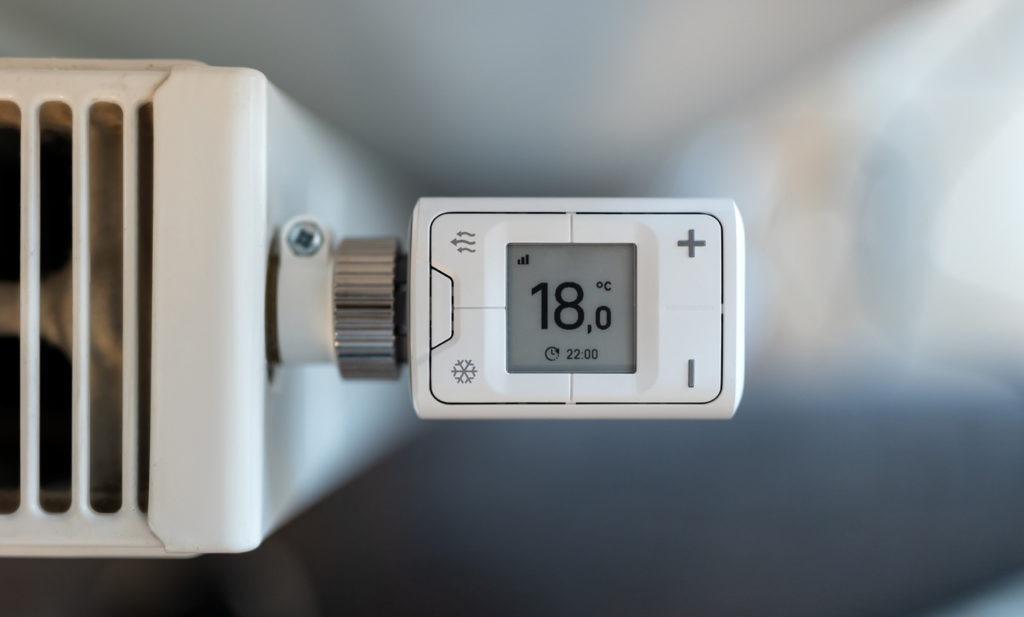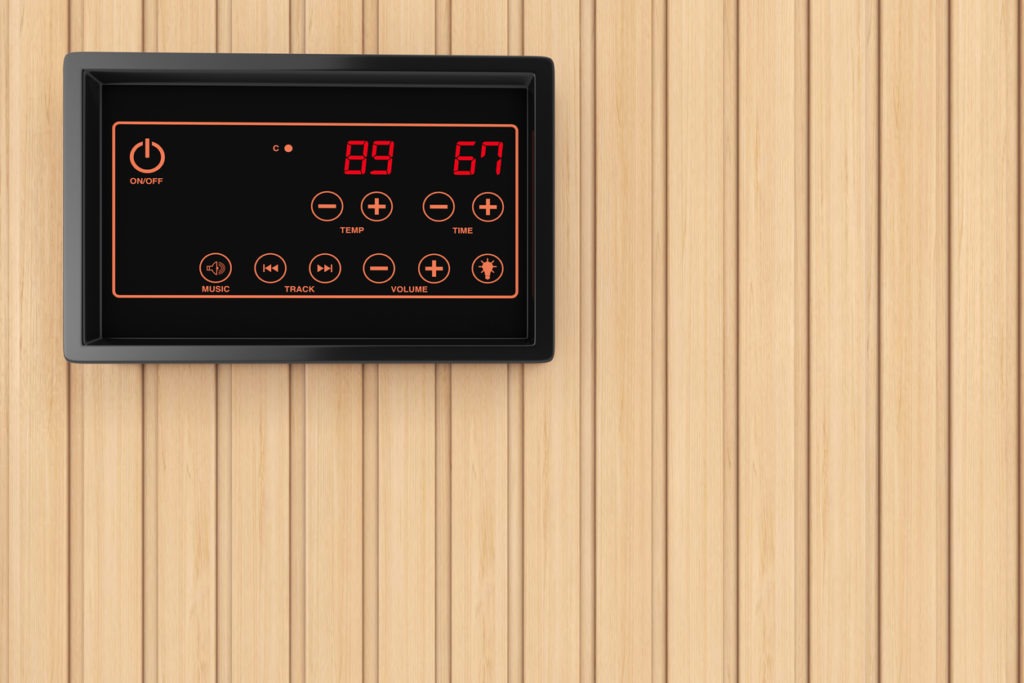Heating and cooling together account for around 40% of a home’s total energy use. Therefore, it is essential to prioritize your investment when it comes to maintaining a comfortable temperature in your home.
Passive design principles offer the best long-term solution for minimizing a home’s heating and cooling requirements. This should be coupled with prudent home practices. There are numerous no-cost and low-cost ways to maximize the efficiency of your heating and cooling systems. In order to maximize your comfort at the lowest possible expense and environmental impact, it is also essential to select the ideal system for your situation.
How to get smart heating and cooling?
If you have too many people in your home on the weekends (or even during the week), you can control these thermostats remotely or through an app so they know who is and isn’t at home. You can also use them with smart lights, which switch off automatically when no one is in the room.
1. Managing your thermostat
Create a timeline. Some thermostats include preprogrammed schedules for different times of the day, allowing you to run the unit during work hours and switch it off during your family’s sleep time and on the weekends. Set specified temperatures for various periods of the day if you like to be more precise with your timetable.
2. Establish a connection to the internet
In order to utilize intelligent heating and cooling, you must link your thermostat to the internet. For this, you will require:
Wi-Fi connectivity (via smartphone or computer)
A plan that accommodates the quantity of monthly data use desired. Before signing up for a plan that is too large or too small, you should consult your provider if you are unsure of how much data your home needs.
3. Operation by smartphone
Installing intelligent elements in your heating and cooling system might facilitate smartphone control. The most effective systems enable the following:
- Set schedules and temperatures from anywhere
- Receive alerts when the system need care, such as when it’s time for maintenance or if your HVAC equipment is malfunctioning
- Configurable from anywhere
Types of Heating and Cooling Options
1. Smart Thermostats
A smart thermostat is capable of connecting to a Wi-Fi network. It gives a user interface for controlling the temperature of their smart home with any smart device from anywhere. Smart thermostats are ideal for houses with multiple smart gadgets, and not simply because of their aesthetic appeal. What actions does it perform that make it so intelligent?
- Smart thermostats are devices that automatically modify heating and cooling system settings.
- Smart thermostats also provide real-time weather updates, energy history tracking information, and smart notifications to ensure you take the appropriate actions at the right time.
- This gadget employs geofencing technology to assess whether or not you are at home, ensuring that your geothermal system operates only when necessary.
Determine Which Smart Thermostat is Compatible with Your Heating and Cooling System
It is crucial to be intelligent, and smart thermostats make it simple to control the temperature in your home. It is prudent to find a smart thermostat that is compatible with your heating and cooling system before purchasing one.
There are numerous smart thermostats on the market, but the most majority are only compatible with a single type of HVAC system. Before purchasing a smart thermostat, ensure that it is compatible with your heating and cooling system (and any other appliances in your house).
Consider scheduling programs that automatically adjust for seasonal changes; if you choose the finest smart thermostat, you won’t have to set timers or modify temperatures as frequently.
It can be overwhelming to select the best smart thermostat for residential use. There are so many smart thermostats on the market that it is difficult to select the one that best meets your needs. Moreover, because smart thermostats are typically more expensive than their conventional counterparts, there is added pressure to select the smart device that would function best with your system.
Follow the steps below to maximize your investment and prevent having a smart device that is incompatible with your household heating and cooling system:
- Determine whether smart technologies are compatible with your system.
- Consider additional features such as voice control compatibility, smart app compatibility, and smart home device compatibility, among others!
- The available smart thermostats feature a variety of smart technologies, including Wi-Fi, Bluetooth, Z-wave, ZigBee, and others. A smart thermostat that is compatible with your smart home devices will allow you to regulate your house’s temperature from your smartphone or other smart device. If you intend to add smart light bulbs, smart plugs, or other smart home devices in the near future, select a smart thermostat that is compatible with these products.
2. Temperature Sensor
A temperature sensor is a device that detects, records, or transmits signals for temperature changes. It accomplishes this by sensing the ambient temperature and translating the input values into electrical data.
In many instances, the responsiveness and accuracy of the temperature sensor are critical. It is widely employed where maintaining a precise temperature is essential. For example, temperature sensors are utilized when products must be held at a specific temperature. In addition, you utilize it to control the temperature of the room.
Benefits of Temperature Sensors
Among the most notable benefits of temperature sensors are:
1. By providing alarms when servers and network equipment are at risk of overheating, downtime can be avoided.
Users will be able to set alerts for predefined temperatures using temperature monitoring devices. They will send an email or text message to important personnel if temperatures reach predetermined thresholds. This implies that if something goes wrong, you or someone else will be alerted and can take action accordingly.
For instance, it will alert you if the air conditioner malfunctions. It will also inform you if the room’s temperature rises owing to intense computer demand. Extreme temperature is one of the most prevalent reasons for replacing hardware. With a temperature sensor, this can be avoided.
2. Ensuring appropriate airflow inlet and exhaust.
You can determine the air temperature entering or leaving your servers. Installing temperature sensors on the front and back of your server racks is all that is required. This is required to ensure that the cold airflow and the heated airflow in the room do not combine.
In addition, the server’s warm air emissions are within permitted levels. Airflow monitoring equipment can monitor the airflow into your server room and alert you if it halts.
3. Extends the service life of your equipment.
You should monitor the temperature and maintain it within an appropriate range. This will aid in extending the life of your equipment and thermostat. It will prevent excessive temperatures from going unreported and resulting in unnecessary wear.
Extreme temperature spikes can diminish dependability. It can result in device failure months later, even if it is not immediately apparent.
3. Smart HVAC
A smart HVAC (heating, ventilation, and air conditioning) system employs HVAC components and other technologies that are networked (such as internet-of-things). It’s the logical progression of building automation systems (BAS).
The objective of a smart HVAC system is to provide occupants with precise control over the temperature of their room or office, including lighting, humidity, fan speed, etc., in order to achieve optimal thermal comfort.
Additionally, they can control the HVAC system using their smartphones or tablets in lieu of dedicated hardware.
The advantages of smart HVAC systems include the provision of thermal comfort precisely as necessary and the possibility for energy savings. This can be achieved by setting the HVAC system to support a space only when people are there and to deprioritize the space when they leave.
In conclusion
making everything “smart” is the current trend. There are smart classrooms, smart cars, and smart phones. We may now equip our entire home with ‘smart’ and technologically-advanced devices to automate our household processes.



